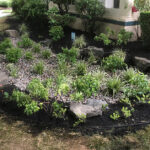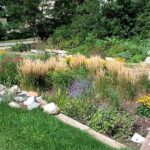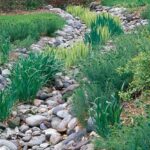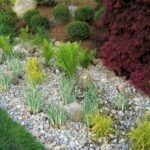Rain gardens are a beautiful and practical solution for managing stormwater runoff in urban and suburban areas. These specially designed gardens are able to capture, filter, and infiltrate rainwater, reducing the amount of pollution entering our waterways and helping to prevent flooding. When properly designed, rain gardens can also provide important habitat for wildlife and create a visually appealing element in the landscape.
The key to successful rain garden design lies in careful planning and consideration of several important factors. One of the first steps in creating a rain garden is to determine the size and location of the garden. The size of the garden should be proportional to the amount of runoff it will receive, and the location should be chosen to capture water from impervious surfaces such as rooftops, driveways, and sidewalks.
After selecting a location for the rain garden, the next step is to choose appropriate plants for the garden. Native plants are often recommended for rain gardens because they are well-adapted to the local climate and soil conditions, require less water and maintenance, and provide important habitat for native wildlife. In addition to native plants, it is important to select a variety of plant species with different root depths and growth habits to maximize water infiltration and pollutant removal.
In addition to plant selection, the design of the rain garden itself is crucial to its effectiveness. The garden should have a gently sloping bottom to promote water infiltration, and be planted with a mix of grasses, flowers, shrubs, and trees to slow the flow of water and trap pollutants. A layer of mulch or compost can also be added to the garden to help retain moisture and provide additional nutrients for the plants.
Another important consideration in rain garden design is proper maintenance. Rain gardens require regular maintenance to ensure they continue to function effectively and remain aesthetically pleasing. This may include removing debris, monitoring water flow, and replacing or adding plants as needed. Regular maintenance will help to extend the life of the rain garden and maximize its benefits for water quality and wildlife habitat.
Overall, rain gardens are a valuable tool for managing stormwater runoff and improving water quality in urban and suburban areas. By carefully considering factors such as garden size, location, plant selection, design, and maintenance, homeowners and landscape designers can create beautiful and functional rain gardens that benefit the environment and enhance the landscape. With proper planning and care, rain gardens can help to create a healthier, more sustainable future for our communities.










